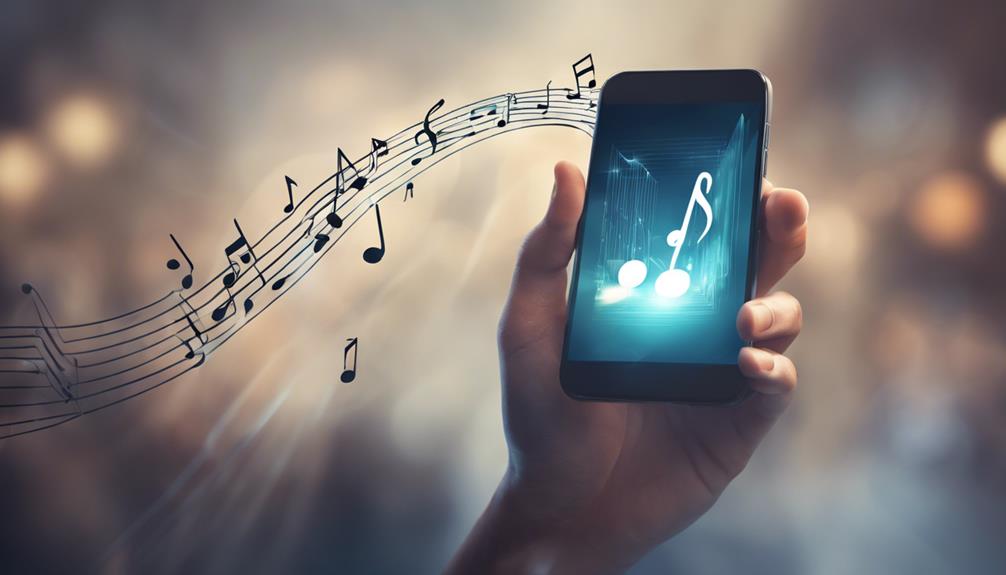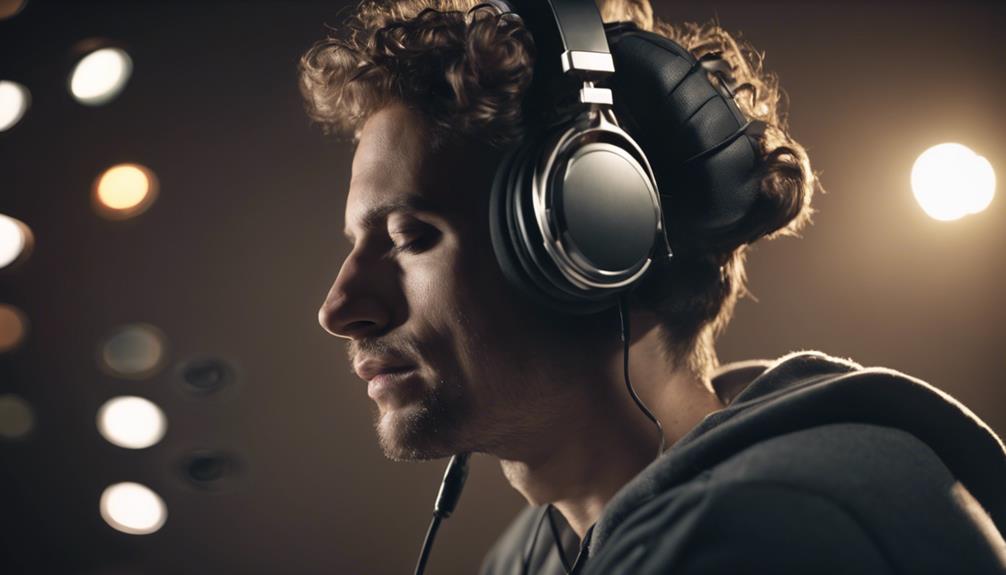When downloading music to our phones, we can choose from purchased downloads on platforms like iTunes, free music from sites like SoundCloud, or subscriptions like Spotify. Understanding copyright laws is important to avoid piracy and respect artists' rights. Before downloading, check your phone's storage, compatible file formats, and internet connection. Select an app with a wide music range, offline listening, and user-friendly interface. Explore music streaming services like Spotify or Apple Music that offer vast libraries and offline listening. For detailed steps and FAQs, the ultimate guide provides detailed information to enhance your music experience.
Key Takeaways
- Choose reputable music download apps for legal and convenient access.
- Ensure your phone supports file formats like MP3 and FLAC.
- Use reliable sources like Amazon Music or Pandora for legal downloads.
- Build a personalized music library tailored to your taste.
- Enjoy offline listening without an internet connection through trusted services.
Types of Music Downloads
When it comes to acquiring music for your phone, there are various methods of obtaining digital music files, each offering distinct advantages and considerations.
Download songs can be obtained through different avenues such as purchased downloads, free downloads, and subscription-based downloads. Purchased downloads allow users to buy individual songs or albums from online stores like iTunes or Google Play Music for permanent ownership. On the other hand, free downloads are available on platforms like SoundCloud or Jamendo, offering legal and cost-free music options. Subscription-based downloads provide access to extensive music libraries through services like Spotify or Apple Music for a monthly fee.
Additionally, there are options to download music from legal sources using free apps or engage in music streaming services. These methods offer convenience and a wide selection of music choices for users looking to expand their music libraries.
Whether you prefer to own your music or access a vast array of songs through a subscription, the world of digital music downloads provides a variety of ways to enjoy your favorite tunes on the go.
Legal Considerations
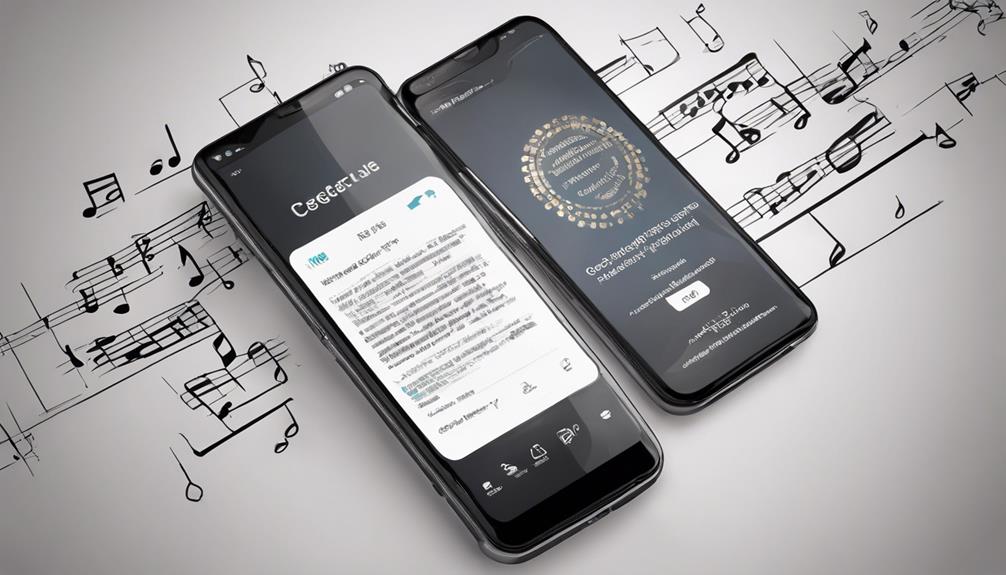
When downloading music to your phone, it's important to take into account the legal aspects. Understanding copyright laws, fair use guidelines, and the differences between streaming and downloading are key points to keep in mind.
Copyright Laws Overview
Copyright laws play an essential role in protecting the rights of music creators by regulating the use and distribution of their work. When downloading music, it's vital to adhere to these laws to respect musicians' intellectual property. Here are some key points to keep in mind:
- Understand licensing terms to guarantee compliance with copyright laws.
- Avoid piracy to uphold artists' rights and protect their work.
- Always check the usage rights of music downloads for legal use.
- Be mindful of DRM-protected downloads, which may have usage restrictions.
Fair Use Guidelines
Exploring the fair use guidelines provides insight into legal considerations when downloading music to your phone. It's essential to adhere to these guidelines to guarantee compliance with copyright laws and licensing agreements.
By downloading music from legal sources, you can enjoy offline listening without risking legal repercussions. Remember to check the usage rights of your downloads and respect artists' rights to avoid piracy issues.
Be cautious of DRM-protected downloads that may limit how you interact with your music collection. Staying informed about these legal aspects will help you build a music library ethically and responsibly.
Prioritize understanding fair use guidelines to navigate the complexities of downloading music while respecting the legal framework that governs it.
Streaming Vs. Downloading
Comparing streaming and downloading music highlights the distinctions in ownership rights and legal considerations for music consumption in today's digital landscape.
- Streaming music offers temporary access, while downloading provides permanent ownership.
- When streaming, users typically receive a license, whereas downloading may involve purchasing with ownership rights.
- Legal considerations for streaming include platform terms, while downloading involves copyright laws.
- Services like Spotify offer vast libraries for monthly fees, while downloading can include one-time purchases or subscription-based downloads with DRM protection.
Understanding the differences between streaming and downloading is essential for managing ownership, usage rights, and compliance with copyright laws, ensuring a legal and enjoyable music experience.
Preparing Your Device
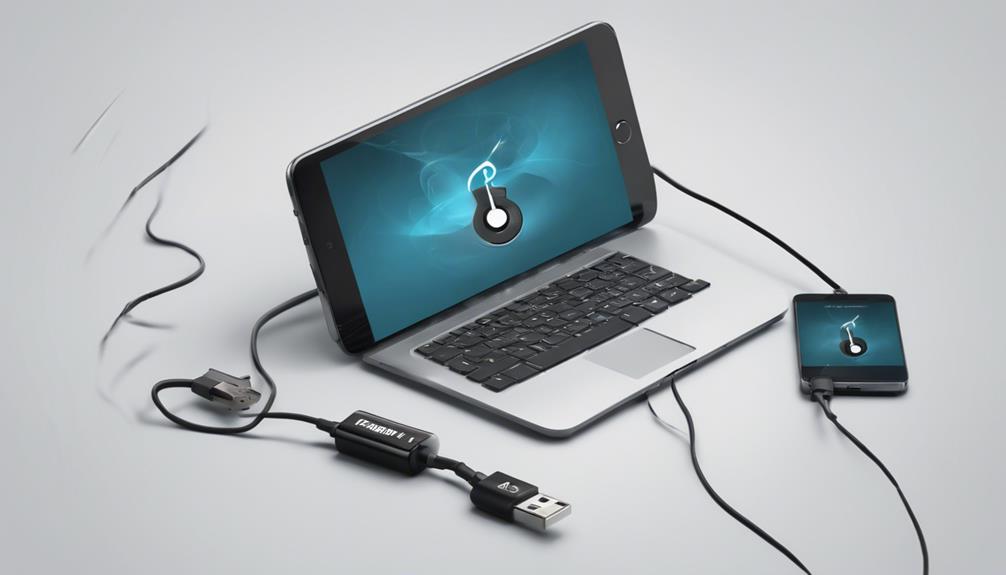
Before downloading music to our phones, it's crucial to properly prepare our devices to guarantee a seamless experience. Start by checking your phone's storage capacity to guarantee sufficient space for music downloads. If needed, consider using a microSD card to expand storage for more music.
Verify that your phone supports file formats like MP3, AAC, WAV, or FLAC for playing downloaded music without compatibility issues. Additionally, confirm you have a stable internet connection for smooth and uninterrupted music downloads to your device.
Adequate preparation is key to enjoying a hassle-free music downloading process. By addressing aspects such as storage, file formats, and connectivity beforehand, you can optimize your device for a seamless music experience.
Get ready to enhance your music library with these preparation steps before delving into the world of music downloads on your phone.
Choosing a Music Download App
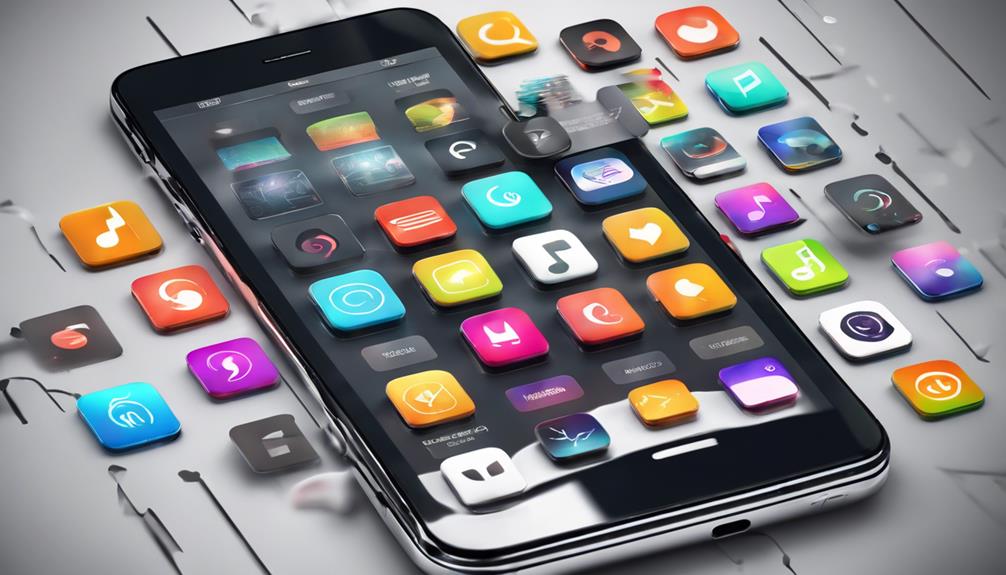
To enhance your music listening experience on your phone, we should carefully select a music download app that suits our preferences and requirements. When choosing a music download app, consider the following factors:
- Features and Music Selection: Look for apps like Spotify that offer a wide range of music genres and artists to cater to different tastes.
- Offline Listening: Make sure the app allows you to download music for offline listening, perfect for times when you're on-the-go without internet access.
- User-Friendly Interface: Opt for an app with a user-friendly interface and easy navigation, making it effortless to browse and download music.
- Efficient Download Speeds: Evaluate the app's download speeds to enjoy a seamless experience without long waits for your favorite tunes.
Using Music Streaming Services

We all enjoy listening to music, and with top music streaming platforms like Spotify and Apple Music, we've access to millions of songs at our fingertips. These services offer personalized music recommendations based on our preferences, ensuring we discover new tracks that resonate with us.
The convenience of downloading songs for offline listening and enjoying ad-free music makes streaming services a popular choice for music lovers.
Top Music Streaming Platforms
Among the top music streaming platforms available, Spotify stands out as a leading service offering users over 70 million tracks to enjoy. When considering music streaming services, here are some other top contenders to explore:
- Apple Music provides a vast library of 75 million songs along with exclusive content and radio shows.
- YouTube Music features official music videos, covers, remixes, and live performances in addition to audio tracks.
- Amazon Music Unlimited boasts a catalog of over 70 million songs and includes a variety of curated playlists for different moods and genres.
- Tidal differentiates itself by offering high-fidelity music streaming with its HiFi subscription tier, providing lossless audio quality.
These platforms cater to various preferences, ensuring a diverse range of music options for users.
Benefits of Streaming
Streaming music services offer a convenient way to access a vast library of songs and enjoy ad-free listening with high-quality audio. With platforms like Spotify boasting over 70 million songs, users can create personalized playlists tailored to their preferences, expanding their musical horizons through curated playlists and recommendations.
The seamless experience extends to offline listening, allowing downloads for on-the-go music enjoyment without needing an internet connection. Embrace the innovation of streaming services to immerse yourself in a world of music, where every beat and melody is at your fingertips, providing an unparalleled listening experience.
Enjoy the freedom to explore, discover, and tailor your music journey with the diverse features these platforms offer.
Personalized Music Recommendations
Immerse yourself in a world of personalized music recommendations by leveraging the advanced algorithms of music streaming services like Spotify. Here's how these services enhance your music discovery:
- Spotify analyzes your listening habits to offer personalized recommendations tailored to your tastes.
- Factors like genre preferences, listening history, and user-generated playlists are considered for accurate suggestions.
- Explore curated playlists and recommended tracks to discover new artists and expand your music library effortlessly.
- Engage with similar artists and recommended content to enhance your music discovery journey and easily find new favorites.
With personalized recommendations, music streaming services revolutionize how you explore and enjoy music, making it easier to discover new sounds that resonate with your unique preferences.
Transferring Music From a Computer

To move music from your computer to your phone, simply connect both devices with a USB cable and switch your phone to file transfer mode. Make sure your music files are in compatible formats such as MP3, AAC, WAV, or FLAC to play smoothly on your Android device. If you prefer a wireless option, consider using cloud storage services like Google Drive or Dropbox to upload music from your computer and access it on your phone hassle-free.
For a direct transfer, employ file transfer programs like Android File Transfer for Mac or Windows Explorer for Windows to efficiently move music files between your devices. Once the music is on your phone, organize it for easy access using music player apps or default media players available on your device. Stay organized and enjoy your favorite tunes on the go with these simple steps.
Downloading Music Directly to Phone
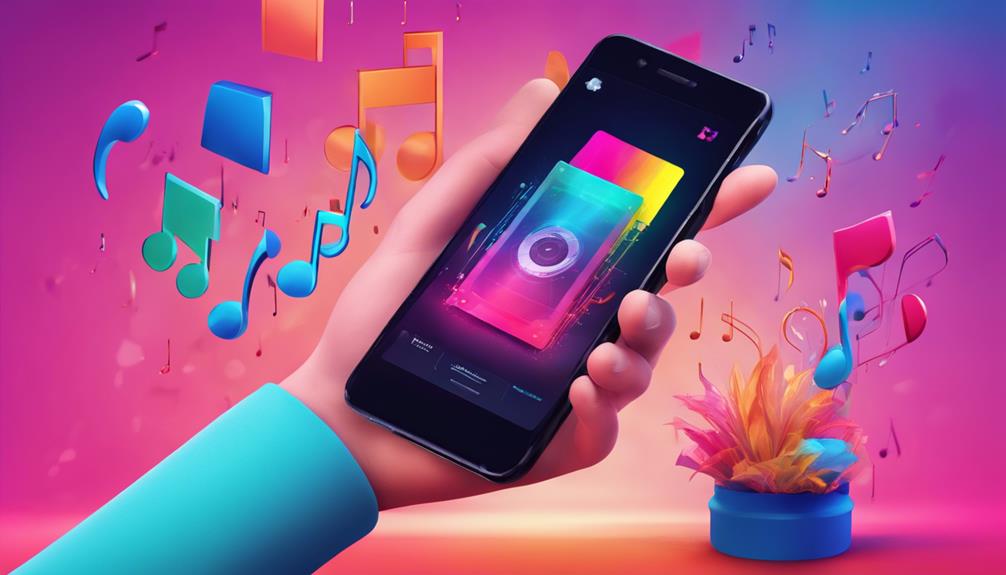
When downloading music directly to your phone, consider using reputable music download apps for a convenient and personalized library. Here are some tips for a seamless experience:
- Access Music Offline: Enjoy your favorite tunes without needing an internet connection by downloading music directly to your phone.
- Use Reliable Apps or Web Browsers: Opt for trusted music download apps or web browsers to save music files directly on your device.
- Personalized Music Library: Build a collection tailored to your taste by selecting and downloading songs directly to your phone.
- No Dependence on Streaming Services: By downloading music, you can listen to tracks without relying on streaming services, giving you more control over your listening experience.
Downloading music directly to your phone offers the flexibility to enjoy your music offline and curate a library that suits your preferences. Confirm compatibility with your phone's file formats for a seamless listening experience.
Frequently Asked Questions
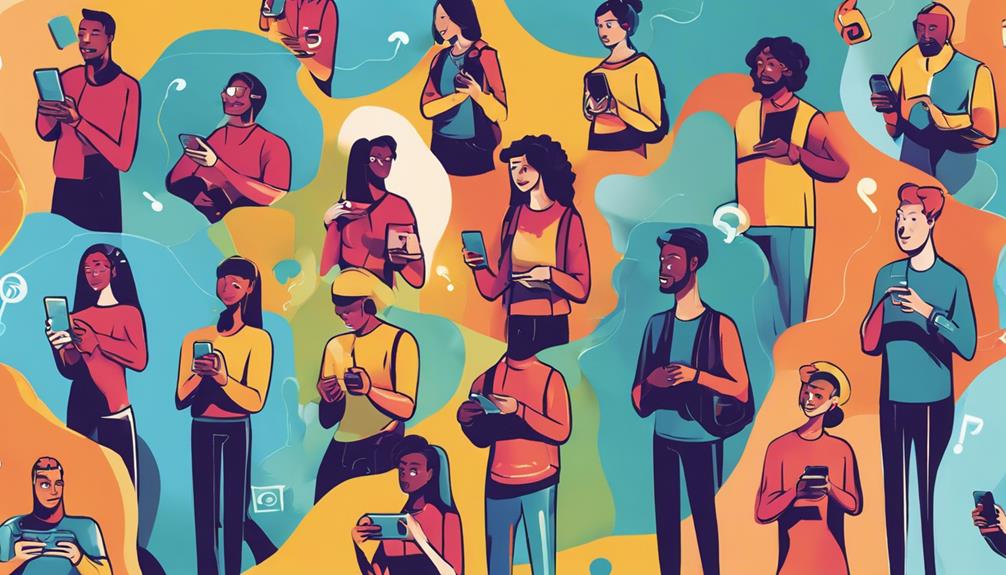
Let's explore the most common queries about downloading music directly to your phone. When it comes to getting music on your device, one popular question is how to download music for free legally. Apps like Amazon Music, Pandora, and SoundCloud offer legitimate ways to download music without breaking any rules.
If you prefer a vast music library, subscription-based services like Spotify and Apple Music are excellent options. To download music directly to your phone, consider using web browsers or apps like Music Download Paradise. Before downloading, make sure your phone supports file formats like MP3, AAC, WAV, and FLAC.
Creating personalized playlists can enhance your music experience, allowing you to enjoy your favorite tunes offline. So, if you're wondering about the best apps, legal downloads, or how to access music offline, these FAQs can guide you through the process. Happy downloading!
Frequently Asked Questions
How Can I Download Music Directly to My Phone?
To download music directly to your phone, we recommend using music download apps like Music Download Paradise. These apps allow you to search for songs by title, artist, or album, making it easy to access a wide range of music.
Once downloaded, the songs are stored in the app's Library tab for offline listening. Enjoy your music without needing an internet connection.
The simple interface and easy navigation make downloading and playing songs straightforward.
How Do I Download a Music Album to My Phone?
To download a music album to our phone, we search for it on a music app or website. After selecting the album, we check for download options and click on the provided button.
We monitor the download progress until the album is fully downloaded to our phone. Finally, we access the album in our music library for offline listening.
Following these steps guarantees a smooth process of downloading music to our phone.
How Do I Put Music on My Smartphone?
When putting music on our smartphone, we can use apps like Music Download Paradise to easily search for and download songs directly to our device. By searching for song titles, artist names, or albums within the app, we can explore a wide range of music options.
After downloading, we can enjoy offline listening by accessing the songs in the app's Library tab. The user-friendly interface simplifies finding, downloading, and playing music on our smartphone hassle-free.
How to Download Free Songs?
When it comes to downloading free songs, we've everything you need! Utilize apps like Music Download Paradise to access a vast library of tunes at no cost.
Simply search for your favorite songs, artists, or albums, then download them for offline listening. With a user-friendly interface, this method is perfect for expanding your music collection without breaking the bank.
Enjoy the convenience and variety of free music downloads with ease!
Conclusion
To sum up, when downloading music to our phones, it can be a fun and convenient way to enjoy our favorite tunes on the go. Keep in mind the legalities, prepare your device, and choose the right app for your needs.
Whether you prefer streaming services or transferring music from your computer, there are plenty of options available. So go ahead, rock out to your favorite songs wherever you are, and stay groovy!

